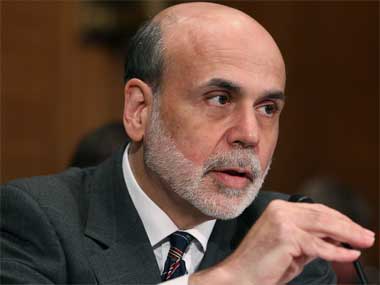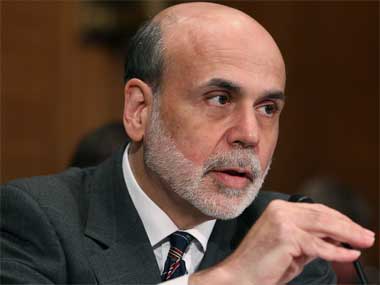Here we go again. Another high-profile call to the US Federal Reserve to take “extraordinary” measures to prop up a sagging economy. Basically, another call for QE3 - a third round of quantitative easing - or some form of it.
This time, it was from the International Monetary Fund, a notoriously pessimistic forecaster, which revised down its estimate of US 2011 economic growth to 1.6 percent from 2.5 percent made just two months ago.
In view of growing risks to US growth, the Fed should “stand ready to adopt new non-conventional measures to sustain the economy,” the world body said, according to a media report.
Like that’s going to help. Think about it: the Fed has, twice in the past, tried to play superhero and rescue the struggling economy from the quicksand of sluggish growth.Both attempts have met with limited success. At best, they could claim to have helped prevent the economy from sinking completely.
In its role as the economy’s saviour, the Fed has already pushed short-term interest rates to near-zero and purchased more than $2 trillion worth of Treasuries and mortgage bonds to bolster markets and hold down short-term interest rates. It has also promised to maintain low interest rates until mid-2013.
What further “extraordinary” measures does the IMF want the Fed to take? And besides, does anybody here feel that this “do something” memo to the Fed seems quite unfair?
Impact Shorts
More Shorts[caption id=“attachment_73459” align=“alignleft” width=“380” caption=“The Federal Reserve cannot - and should not - be single-handedly responsible for economic growth.Mark Wilson/Getty Images”]
 [/caption]
[/caption]
The Federal Reserve cannot - and should not - be single-handedly responsible for economic growth. Interest rates are not the sole driver of long-term growth, although they can have an impact in the short term.
That’s a point that Federal Reserve Chairman Ben Bernanke took efforts to point out in his widely-anticipated speech at Jackson Hole, Wyoming, last week, as he called on other policy makers to address challenges beyond the central bank’s control - including long-term unemployment, housing and government budget deficits in the US and the sovereign-debt crisis in Europe. “Most of the economic policies that support robust economic growth in the long run are outside the province of the central bank,” he said. In other words, even the government needs to pitch in with appropriate growth-stoking policies.
Consider this fact: even after two generous rounds of turning on the money spigots, the economy is barely crawling ahead. Growth for the June-ending quarter was an annualised 1 percent, revised lower from previously estimated 1.3 percent. Now, a growing band of economists believe there’s a one-in-three chance the economy will slide into recession. The extra gushes of liquidity didn’t boost growth or create jobs.
So who benefited from all that money sloshing around in the system? Financial markets and companies . Stocks and commodities (until recently) got a big lift, along with corporate profits. During and after the recession, American companies shed workers, expanded overseas and continued to cut costs in other areas, which improved their margins. As a result, profits soared - and was stashed away as cash holdings, which today top $1 trillion. Meanwhile, the unemployment rate hovers at a stubbornly high 9 percent. In other words, American companies benefited, not American workers.
More to the point, average annualised growth in consumer spending over the past 14 months was a mere 0.2 percent, according to Stephen Roach, non-executive chairman of Morgan Stanley Asia. Consumer spending, the mainstay of the American economy, hasn’t nudged ahead much because most households (heavily indebted) are still busy trying to repair their balance sheets. A gloomy jobs outlook isn’t helping either.
So seriously, how can anyone believe that another round of monetary easing will throw up completely different results, like miraculously lift the economy out of its doldrums? Earlier rounds never accomplished that, so why the persistent belief this time will be different?
Wake-up call
Now with the global economy possibly in a “dangerous new phase,” it might be time to try something mildly different. Like getting governments to do some more to boost growth. In fact, one of the reasons why stock markets have been experiencing such wild swings this month is that investors have sensed policy inertia to tackle growth on the part of governments, especially in the developed world, even as they focus on balancing their national budgets in almost obsessive-compulsive fashion.
Balancing the budget is a lofty goal, but attempting to drastically slash government spending and raise taxes at a time of tepid growth could prove counter-productive. A fact that International Monetary Fund Managing Director Christine Lagarde noted when she said: “Fiscal policy must navigate between the twin perils of losing credibility and undercutting recovery.” A reasonable fiscal policy should aim at cutting budget deficits in the long run while taking care not to snuff out a fragile recovery in the short term.
Balancing the budget works only if the economy generates income to offset the spending. If there is no growth, there is no income - and nothing much to balance anyway. Fiscal austerity combined with monetary easing are a surefire way of getting nowhere on growth.
Fiscal austerity should not become an excuse for the US government to shirk its responsibility for fostering economic growth. It needs to frame policies and incentives to boost unemployment and growth. Bernanke cannot do it alone. And the IMF - or the world - should not expect him to. It’s quite astonishing that the world body is calling for further monetary easing from the Fed when most private-sector experts have emphasised that at best, such monetary stimulus will only help “at the margins”.
But given the world we live in, come 21 September, that’s just what Bernanke will be expected to do.
)